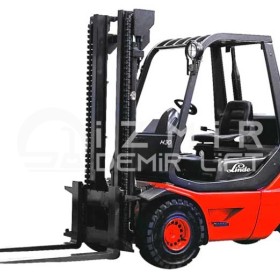
Business managers often focus on the big items to cut costs: personnel expenses, raw material costs, energy bills... However, there's a hidden enemy that's often overlooked, quietly lurking in warehouse aisles and slowly eroding your profitability: the poorly selected forklift. A forklift that seems like a mere machine at first glance can cost your business much more than you think with a bad decision. Here are the costs of choosing the wrong forklift.
1. The Cost of Inefficiency: Lost Seconds, Accumulated Hours
Imagine a forklift that's too large and cumbersome to operate in a narrow warehouse aisle. The operator must perform additional maneuvers at every turn, repeatedly back and forth to place a pallet on a shelf. Perhaps 5-10 seconds lost per maneuver may seem insignificant. But multiply this by hundreds of pallets per day, 5 days a week, and 52 weeks a year. The resulting thousands of hours of lost labor are the direct cost of inefficiency. Conversely, a small, battery-powered forklift, inadequate for heavy loads outdoors, is constantly strained and slows down operations. The right machine gets the job done quickly and in one go.
2. Energy/Fuel Waste Cost
Using a diesel forklift larger and more powerful than you need in a confined space to handle light loads is like using a truck to transport a 2-liter carton of milk. This means unnecessary fuel consumption. Similarly, an older-technology battery-powered forklift that requires constant charging and runs out of power mid-job creates both energy inefficiency and increases costs through idle time spent charging. The difference between the energy efficiency of a modern Lithium-Ion battery-powered forklift and an older diesel engine can be painfully evident on your energy/fuel bill at the end of the year.
3. Maintenance and Repair Costs
Every forklift is designed for a specific workload and operating environment. Constantly using a forklift outside that isn't designed for rough terrain puts excessive stress on its suspension, tires, and chassis. This means frequent breakdowns, unexpected part replacements, and increased service bills. Failure to use the machine "as intended" can also void your warranty. A machine operating under the manufacturer's recommended conditions requires significantly less maintenance and has a longer lifespan.
4. The Cost of Work Safety and Accidents
This is the heaviest and most tragic cost. Operating a forklift in an area with poor visibility, choosing the wrong attachment for unbalanced loads, or an overloaded machine overturning... The cost of forklift accidents isn't measured solely by the damaged goods or machinery. Lost workdays, legal fines, increased insurance premiums, and most importantly, the emotional toll of an employee injury can be too much for a business to bear. Safety begins with choosing the right forklift.
5. The Cost of Operator and Employee Satisfaction
Imagine an operator forced to work with a forklift that constantly malfunctions, is difficult to use, and isn't ergonomic. This negatively impacts operator fatigue, stress, and motivation. An unhappy operator is a more careless and less productive operator. This can lead to high employee turnover and increased costs for finding and training new operators. A machine that is comfortable, safe, and makes work easier is a key factor in increasing employee satisfaction and company loyalty.
Choosing a forklift is not a simple purchasing decision; it's a strategic one that directly impacts the operational and financial health of your business. At Izmir Demir Lift, we don't just sell a machine; we help you find the right solution to protect your business from these hidden costs.